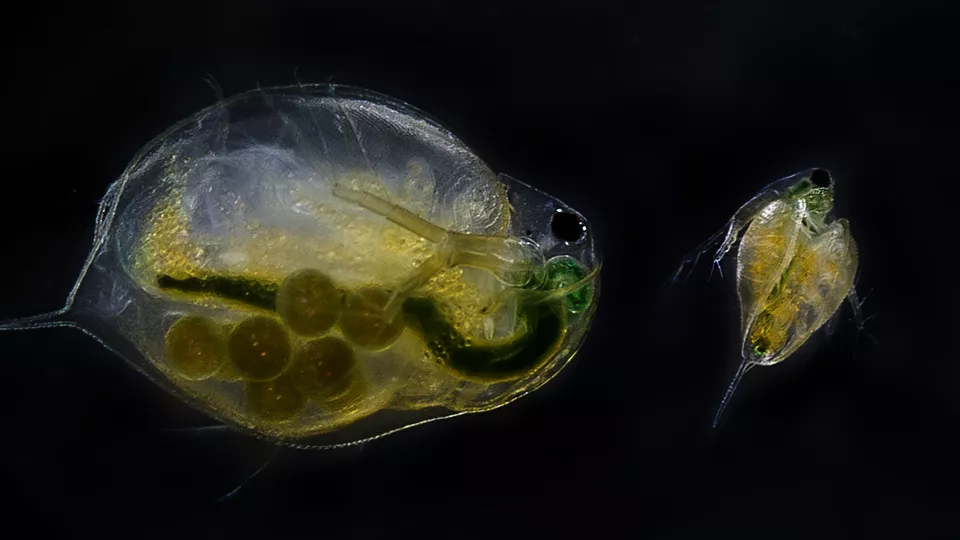“This is because the particles have so much surface area in relation to their mass. It is a large fraction of the particles that are hit by the UV rays,” says biochemistry researcher Tommy Cedervall, who is leading the project “Environmental impact of nanoplastics from degraded ordinary plastic articles” funded by the Swedish Environmental Protection Agency.
How do nanoplastics affect animals and plants at the beginning of the food chain?
The discovery that nanoplastics appear to degrade faster than larger plastic particles is good news because it could mean that the plastics do not cause as much damage as feared. In the study, the researchers tested breaking down several different types of commonly used plastics, such as polystyrene from Styrofoam and plastic lids, Polylactic acid (PLA) from coffee packets and PET from bottles. In the next step, the researchers exposed zooplankton to the particles.
It turned out that none of the plastics adversely affected the zooplankton. One type of plastic, PLA, even seemed to have positive effects. Those particles increased the life span of the plankton.
“That really surprised us,” says Tommy Cedervall.
He thinks the increased longevity may be related to the fact that beneficial bacteria like to grow on the plastic particles.
Results apply only to nanoplastics – not other nanomaterials
“In this study, we haven’t seen anything to suggest that nanoplastics cause major problems when they are absorbed by zooplankton,” says Tommy Cedervall.
The nanosized fractions were not toxic to the zooplankton Daphnia magna in the used concentrations. In contrary, for at least the two plastics High Density Polyethylene (HDPE) and PLA, the nanoplastics increase the lifetime of the Daphnia magna – probably because the nanoplastics can be utilized by bacteria which in turn serve as additional food for the zooplankton.
Tommy Cedervall stresses that their results at this stage apply specifically to nanoplastics and not to other nanomaterials, such as rubber.
“To answer the question of how nanoplastics affect humans, more research is needed on the long-term effects of the plastic particles in the body,” says Tommy Cedervall in an interview with Extrakt, an online magazine for people who want to stay updated on the latest research published by the Swedish Research Council Formas.


